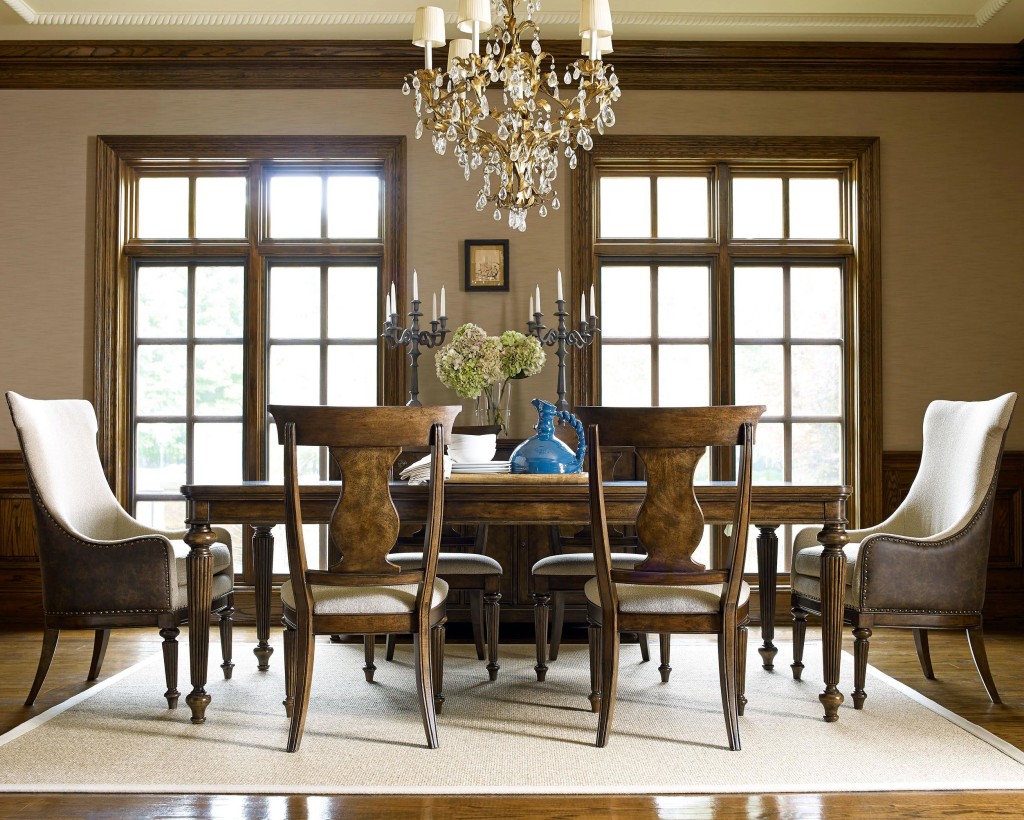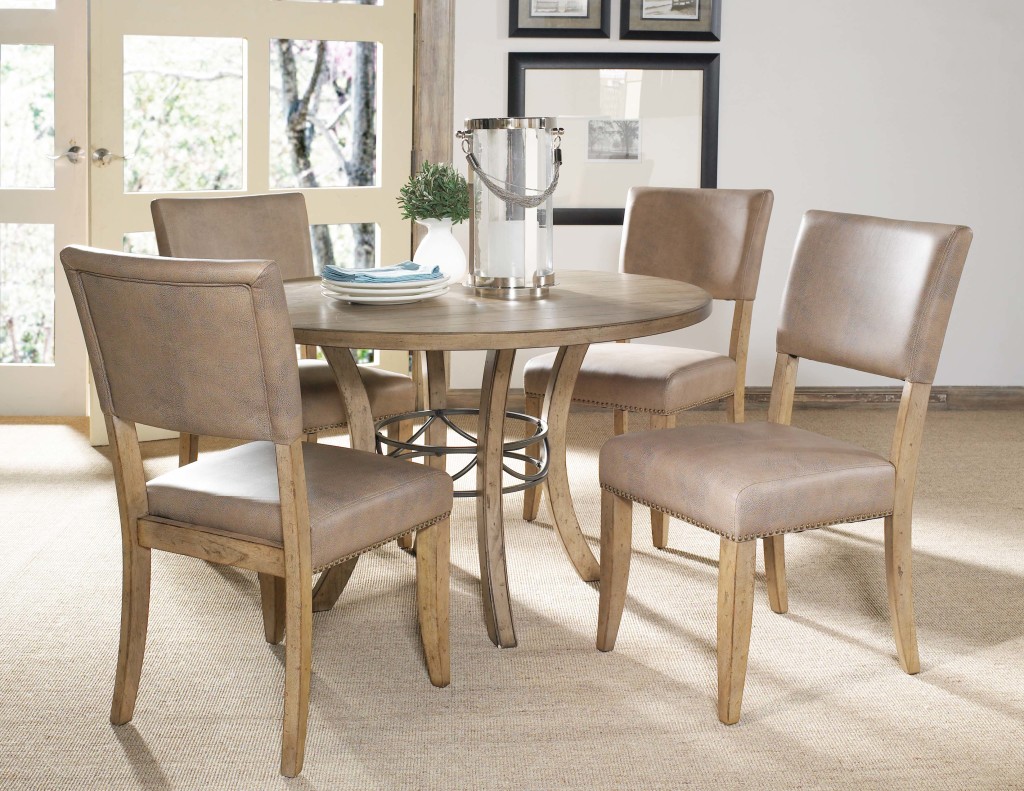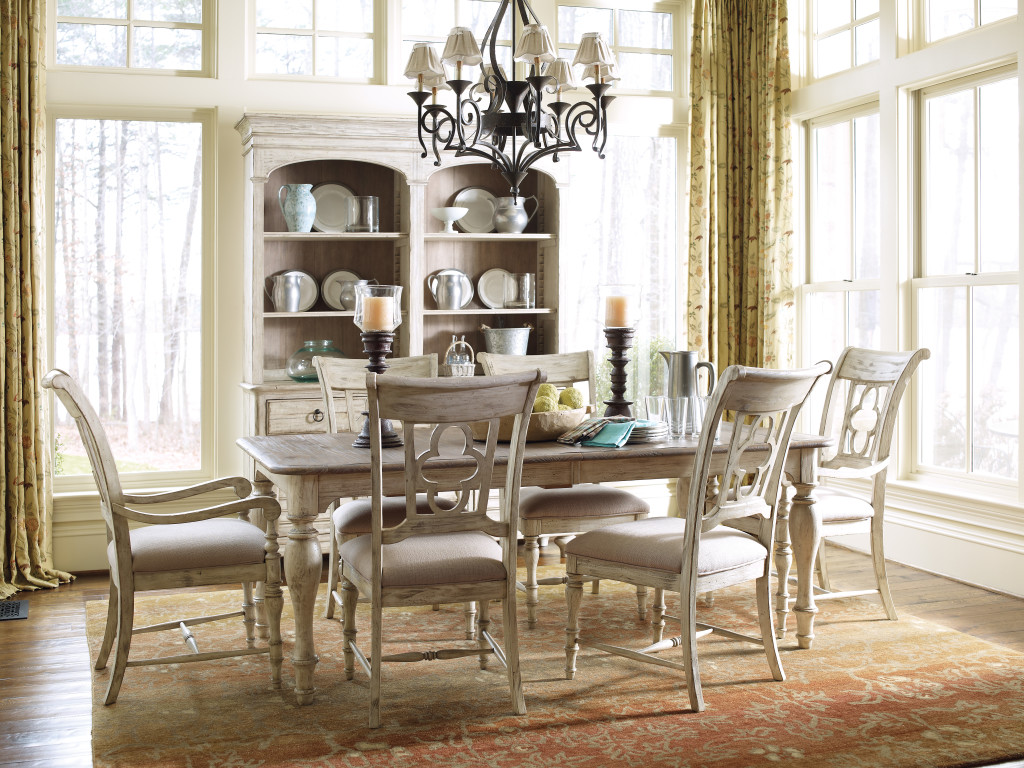Once upon a time choosing a dining room table was easy. There simply weren’t as many options. A rectangular wooden table was the norm with matching wooden chairs. Rightfully so, these classic suites are still popular and still look fabulous – but today, you have limitless choices! Here are a few tips on how to choose the right dining room table for your space.
Table Shape
Rectangle. The timeless rectangle remains the most popular shape. Most dining rooms are rectangular, making this an ideal fit; as well, a rectangle can accommodate groups of almost any size. It’s functional, attractive, family friendly and available in the widest array of materials and styles.
Oval. The oval table is much like the rectangle. It’s very versatile and works well with any number of guests, but with a gentle curve that makes it a little more formal and traditional.
Round. Definitely the coziest table shape and the most politically correct – since there is no head of the table, everyone has equally status! Round tables are best suited for small spaces and small groups, generally up to about 6. Beyond that number, serving and conversation become awkward. A square room best suits a round table, accentuating its shape and curves.
Square. Charming in the right setting, square tables offer intimacy for a small group, but as with round, a large square becomes cumbersome. Choose a square to seat 4 people only. Some suggest a square works well in juxtaposition to a rectangular room; it’s up to you!
Octagonal. An octagon functions much like a square or circle, but is more distinctive. For the adventurous only.
Table Material/Style. The variety of finishes available now is amazingly huge – from traditional dark woods to beige/grey distressed woods; from painted surfaces to glass to acrylic to chrome to gold! As for styling, trending right now are trestle tables, metallic accents, large pedestal bases and sleek mid-century styles. But our advice is to choose what you love; most dining rooms suites are used for many years.
Table Use. Keep usage in mind when selecting table materials. Is your table used every day or on occasions only? Do you have a young family? Do you like to do crafts or work on your table? Durability is important. Glossy dark woods will show wear more easily than light, matte or distressed woods, for example.
Table Fit. It’s key that your table functions well in the space available. To ensure every person seated has plenty of room, as well space behind for walking and serving, opt for about 45 inches from the table to the wall or furniture behind. But don’t go much beyond this space allotment; a too small table will look disproportionate and the room won’t be intimate for conversation.
Reviewing these considerations should help prepare you when you start shopping for a new dining room table. Of course, you also need to think about dining room chairs…but that’s another blog!




Leave a Reply